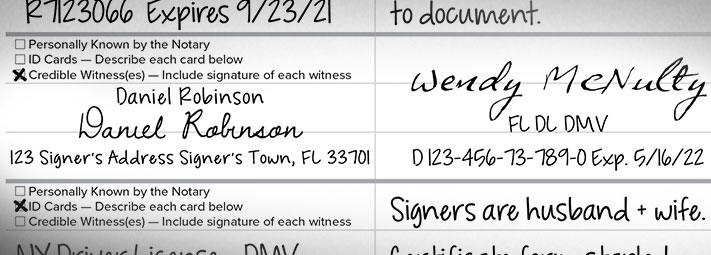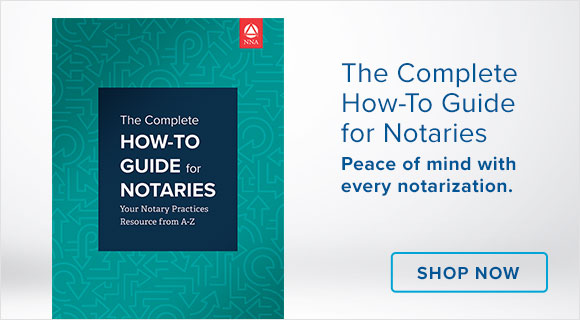When a signer lacks identification documents, some states permit Notaries to identify the signer through one or two credible witnesses. A credible witness is an individual who personally knows the signer and can vouch for the signer’s identity to the Notary.
If you use credible witnesses to identify a signer, what information do you need to write down in your journal? Here are some guidelines for recording credible witness information in a journal entry.
State requirements for credible identifying witnesses vary
Requirements for credible witnesses are different in each state. In Nevada (NRS 240.0025) and Pennsylvania (57 Pa.C.S. 307[b]), only a person who personally appears before the Notary and personally knows both the signer and the Notary may serve as a credible identifying witness. Florida gives signers the option of being identified by one credible witness who personally knows the Notary and the signer or two credible witnesses who personally know the signer and present ID cards to the Notary (FS 117.05[5][b]). Under Florida law, a credible witness may be used when a signer does not possess an identification document listed in the statute and it would be difficult or impossible to obtain one. In addition, a credible witness may be used when the witness is not named nor financially interested in the document.
Arizona (ARS 41-311[11][a]) and Colorado (CRS 24-21-507[2]) allow signers to be identified by a single credible witness who either personally knows the signer and Notary, or who personally knows the signer and can provide satisfactory ID to the Notary. Pennsylvania, Florida and Colorado require the credible witness’ oath or affirmation to be in writing. Always be sure to follow your state’s rules for using credible witnesses to identify a signer.
Journal entry requirements for credible witnesses
Since a credible witness essentially serves as a human ID card for the signer, any information you record about credible witnesses should be written in the ID section of the journal entry. If you need additional room to enter information about more than one witness, you can also use the “Additional Information” section of your journal entry.
Again, you must follow your state’s rules for Notary journals when recording information about a credible witness. For example, the Arizona Secretary of State requires the Notary to record the full name, address and signature of each credible witness in the journal entry along with the type of identification presented by the credible witness (Arizona Notary Public Reference Manual), while Massachusetts Notaries are only required to note in the journal entry that the signer was identified on the oath or affirmation of a credible witness (GL 222 Sec. 22[e]).

Journal entry recommendations in states with no journal rules
Some states, such as Florida, permit the use of credible identifying witnesses but do not require Notaries to keep a journal. If you’re a Notary in a state that doesn’t provide journal guidelines, but want to record information about a credible witness in your journal, the NNA recommends following Standard VIII-A-2 of The Notary Public Code of Professional Responsibility:
1. Note that the signer was identified by one or two credible witnesses.
2. Record the name and address of each credible witness.
3. Have each credible witness sign your journal entry.
Please see the sample credible witness information in the photo above as an example for states without journal guidelines.
David Thun is the Assistant Managing Editor with the National Notary Association.

